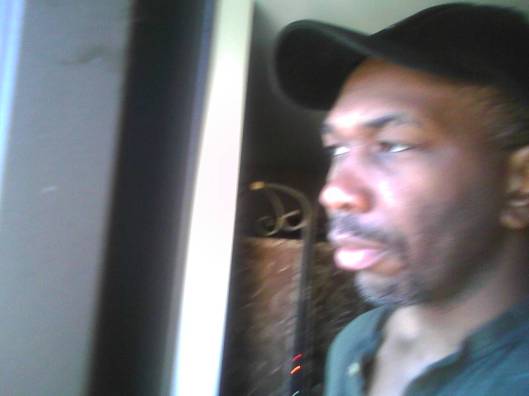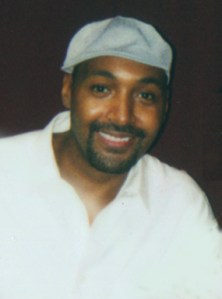Tags
616, 616 East Lincoln Avenue, Abortion, Angelia N. Levy, Boy @ The Window, Choice, decisions, Eri, Family, Fatherhood, Intervention, Maurice Eugene Washington, Mom, Motherhood, Parenthood, Pregnancy, Pro-Choice, Pro-Life, Reproductive Rights, Sarai, Silver Spring, Women's Rights

Ultrasound of fetus, 2nd or 3rd Trimester, November 1, 2012. (http://brmh.org).
I agree with President Barack Obama and with so many leading women. Men — especially men in leadership positions — should just shut up when it comes to women’s reproductive rights. Still, my life has given me a unique perspective on a woman’s right to choose, if only because I’ve had little choice as a child and a husband to be involved. I can only say that choice isn’t easy, even for pro-choice males. But I can also say that I knew more about choice at twelve than most men would ever care to know, and more about bringing new life into the world as a result.
The two examples of “the decision” that stand out most for me are twenty Novembers apart, in ’82 and ’02.
A couple of weeks before Thanksgiving ’82, I noticed something about my mother. At a time when we all looked starved, my mother looked round. Her stomach and cheeks were telltale signs. So I asked her, my tweener voice cracking all the while.
“Mom, are you pregnant?!?”
“Yeah, Donald, I’m pregnant,” she sighed.
“What! You got to be kidding! You mean you’re still having sex with him?”
“Watch ya mouth, boy!”
“Mom, what are we going to do? You can’t have a baby, not now, not with all these mouths to feed!”
“Donald, what I’m supposed to do?”
“You need to get an abortion, that’s what!”
“I don’t believe in abortion. It’s against God’s will.”
“Well, we can’t feed the kids that are here now, so how can you feed it? Get an abortion Mom, before it’s too late!”
Before my mother could say anything else, I stormed out for yet another store errand for milk, diapers, and all the things I couldn’t eat. I wanted to cut Maurice’s balls off and shove them down his throat. I wanted to shake Mom until her eyes rolled back in her head. Most of all, I wanted to get her to an abortion clinic yesterday (see my post “The Quest For Work, Past and Present” from August ’12).
That “it” turned out to be my sister Sarai, my late sister, born nearly four months after I came out as a pro-choice feminist and a stress-out Hebrew-Israelite teenager. She lived for twenty-seven years, five months and two days with sickle-cell anemia, without ever knowing I once preferred her not to be born (see my post “My Sister Sarai (Partial Repost)” from July ’10).
Over the next two decades, I’d become so fed up with kids and family, 616 and Mount Vernon and so many things in my life that I once thought that I’d never get married or become a father. The people in my life growing up in Mount Vernon — like my ex-stepfather and the young folks in the neighborhood — refused the responsibility of fatherhood (and in a few cases, motherhood). The idea that there would ever be a child of mine running around without me being in their life made me determined to limit my casual relationships and ensured that I would always have protected sex.
Even after getting married in ’00, I still wasn’t sure if I really wanted a child. Out of any seven-day period, I would’ve been happy to be a dad for four days, and miserable for the other three. I wanted to make sure my wife and me could afford parenthood, that we had the emotional and psychological capacity to take care of any child we brought into this world.
By the middle of ’02, though, it was obvious that my wife wanted to have a child, a son. Coming off of a family intervention, in which my then seventeen-year-old brother Eri had made my mother a grandmother, I was even less excited than I otherwise would’ve been (see my post “Dear Mama (More Like, ‘Dear Mom’)” from October ’09). Still, I loved my wife, and I loved myself enough to think that if I liked the idea of a kid four out of every seven days, it was worth a try.
We didn’t try very long. By Thanksgiving Day ’02, I picked up on my wife’s change of emotions before she did. I had asked her to watch over heavy cream that I was warming up to make a chocolate sauce. The cream wasn’t supposed to boil. It did anyway, as my wife wasn’t paying full attention. Instead of being argumentative with me per usual about my pointing out her lack of attention to detail, she started crying, as if it was the end of the Law & Order franchise. I was startled, and said, “Honey, I think you’re pregnant.” She laughed at first, but as we would eventually find out, I was correct.
It was one of the happiest moments of my life! I had made my wife immeasurably happy, and I found myself wanting something, perhaps for the first time. To be a great father, to live long enough, to be healthy enough, to be productive enough to be the father that I never had growing up.
If it had turned out that my wife had not wanted to be a mother, and she had become pregnant, and it turned out that she wanted an abortion, I would’ve fully supported her. Not just because I wanted her to be happy, and not just because I’m more firmly pro-choice now than ever. I’ve seen my mother and too many other mothers who’ve made the wrong choices for themselves and their lives.
Life can be long and miserable when making bad decisions, especially when it comes to bringing another life into this world. That anyone would think it a good idea to limit what is already one of the most difficult decisions women and families have to make is anti-Christian and immoral, not to mention just plain stupid.





















